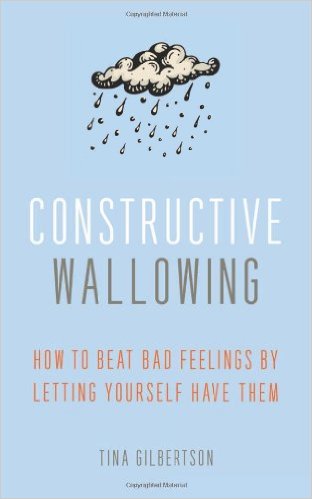by Annabelle Parr
Humans are wired for connection. Relationships bring us immense joy, but they can also be challenging at times. There will inevitably be moments when we miscommunicate and misunderstand each other, and this can lead to frustration and conflict where both partners feel angry and hurt.
Here’s an example.
Julie and Rob both have busy lives, children they love, and full-time jobs. Julie wants Rob to spend more time with the family. Rob wishes Julie understood the overwhelming pressure his boss puts on him. Julie never “signed up” to be a single parent; and Rob doesn’t seem to understand that she has pressures and responsibilities of her own at work. Julie, unlike Rob, makes time for the family. It is the third night in a row that Rob has called to say he won’t be home before the boys go to bed. Julie is tired and frustrated. She snaps, “You don’t have to come home at all, for all I care.” Rob feels demoralized. It seems like he can’t please anyone no matter what he does. Julie is fuming and can’t seem to make Rob understand how she feels so alone.
Both Rob and Julie’s feelings are valid, but neither one of them is feeling heard. Both of them are now feeling angry. Anger is not a bad thing; there are no “bad” emotions. However, when people get angry, conflict does have the potential to escalate.
We tend to equate anger with aggression, but anger is an emotion while aggression is a behavior.
The problem isn’t anger itself. As Tina Gilbertson notes on her blog, “anger has never hurt anyone.” Emotions, no matter how strong, cannot cause harm. Rather, it is our behavior and our emotional expression has the potential to inflict injury. So, our negative connotation towards anger is due to our lack of understanding surrounding how to express ourselves when we feel mad.
Allowing ourselves to get angry is actually healthy.
While getting aggressive is destructive, allowing ourselves to feel angry is vital. Here’s why.
1. Anger, like any emotion, is information. Ignoring anger is like ignoring your smoke alarm. Approaching the screeching alarm may be uncomfortable, but it’s a sign that something is amiss. When we ignore such a vital piece of information, we invite the underlying problem to turn into a full blown fire.
“…feelings like… anger… instead of being bad news, are actually very clear moments that teach us where it is that we’re holding back…They’re like messengers that show us, with terrifying clarity, exactly where we’re stuck.”
- Pema Chödrön
“Anger is the feeling that says No to opposition, injury, or injustice. It is a signal that something I value is in jeopardy.”
- David Richo
2. Anger is energy that we can use to create change. We can either take this energy out on ourselves and/or others, or we can channel it into positive, constructive change. For example, rather than getting into a yelling match with a family member, you can use your angry energy as courage to set a firm, clear boundary. Or rather than ruminating on all the bad things that happen in the world, you can use your anger as motivation to get involved in volunteering for a cause close to your heart.
“We begin to use our anger as a vehicle for change when we are able to share our reactions without holding the other person responsible for causing our feelings, and without blaming ourselves for the reactions that other people have in response to our choices and actions. We are responsible for our own behavior. But we are not responsible for other peoples’ reactions, nor are they responsible for ours.”
- Harriet Lerner
3. Anger can help protect us, at least for a time. Anger helps us to draw a line between what we will accept in our lives and what we will not. It can also help us ease into pain that we may not be ready to fully experience without a protective layer - anger. Holding on to anger across our lifetime is toxic. But allowing ourselves to be angry for a time may give us the space we need to set boundaries and create room to heal.
“My dictionary defines forgiveness as a ‘letting go of resentment.’ But how do we let go if we believe our anger protects us from further injury or, in some strange way, holds a perpetrator accountable? Resentment and righteous indignation distance us from our own pain, and we need distance to survive. At least initially.”
- Daniel Gottlieb
4. No matter how hard we try to repress our anger, it will eventually find its way out at our expense. We cannot will our emotions away. They’ll simply find other outlets or ways to catch up with us. The only way to get rid of an emotion is to feel it and allow it to move through us.
“Passive anger [passive aggression] is inappropriate and not an adult way of behaving. Strongly expressed anger is called rage. Strongly held anger is called hate. Unexpressed anger is resentment. Anger can be unconsciously repressed and internalized. It then becomes depression, i.e. anger turned inward.”
- David Richo
“Let go of the battle. Breathe quietly and let it be. Let your body relax and your heart soften. Open to whatever you experience without fighting.”
- Jack Kornfield
So next time you find yourself feeling angry, give yourself grace and permission to feel it. Because, as David Richo (1991) wisely states, “the anger has pointed to where it still hurts.”
How to Handle Anger Constructively:
- Pause. Take a deep breath and center yourself before trying to communicate.
- Acknowledge and accept what you are feeling. Give yourself the benefit of the doubt; your feelings exist for good reason. Ask yourself what exactly you are feeling – frustration, pain, fear, rejection. Get curious about what caused that feeling to arise.
- Have compassion for yourself.
- Have compassion for the other person. Give them the benefit of the doubt as well, and recognize that their feelings exist for good reason too. Get curious about their emotions and what has triggered that emotion in them.
- Respond rather than react. Reacting is reflexive; it’s a knee jerk reaction that occurs when someone hits one of our sore spots. Reacting is natural and happens to everyone from time to time. But how you move forward after you react is important. Notice your own reaction and then respond to it. Responding is pausing, communicating without blame, and listening from a place of compassion rather than defensiveness.
If you find yourself struggling with anger and could use some help navigating these feelings, you could benefit from Cognitive Behavior Therapy, Acceptance and Commitment Therapy, and mindfulness. Dr. Shoshana Shea can help. She can be contacted at 619-269-2377.
References:
Chodron, P. (1997). When things fall apart: Heart advice for hard times. Boulder, CO: Shambhala Publications, Inc.
Gottlieb, D. (2010). The wisdom of Sam: Observations on life from an uncommon child. Hay House, Inc.
Kornfield, J. (1993). A path with heart: A guide through the perils and promises of spiritual life. New York, NY: Bantam Books.
Lerner, H. (1985). The dance of anger: A woman's guide to changing the patterns of intimate relationships. New York, NY: Harper & Row Publishers.
Richo, D. (1991). How to be an adult: A handbook on psychological and spiritual integration. Mahwah, NJ: Paulist Press.































